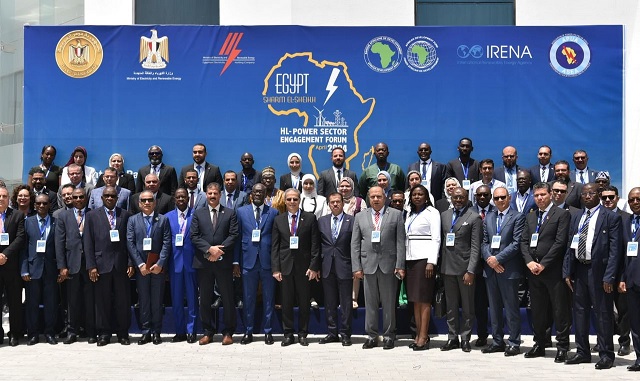
Uganda’s 52,000 MW Vision 2040 aligns perfectly with the opportunities in integrated African power trading
COMMENT | HARRISON E. MUTIKANGA | I was privileged to participate in the High-Level Power Sector Engagement Forum in Sharm El Sheikh, Egypt, from 21st to 25th April 2024, where we discussed ‘Power Security and Energy Transition: The Roles of Utilities, Power Pools, and Governments’, to address Africa’s electricity challenges.
Despite having the world’s largest renewable energy resources, Africa’s global energy consumption share is only 3% with 43% of her population without access to electricity (IRENA). To address Africa’s electricity challenges, the forum, especially, highlighted the immense potential benefits of African power trading as it can justify and stimulate increased investment in electricity infrastructure and increase access to ensure energy security. Further, Integrated power pool operation can lower the need for capacity reserves, enhance operational efficiency, improve system reliability, cut emissions and realise savings from reduced reliance on expensive fossil fuels.
The first cross-border interconnection in sub-Saharan Africa was the 132 kV line from Uganda’s Nalubaale hydropower station (formerly Owen Falls Dam) to Kenya in 1958. Since then, regional power trading has led to the formation of the Southern African Power Pool (SAPP) in 1995, the Western Africa Power Pool (WAPP) in 1999, and the Central and Eastern Africa Power Pools (CAPP & EAPP) in 2003 to 2005. However, trading volumes remain low. SAPP, the most liquid market in Africa, meets 3.5% of demand through trade, while EAPP has, at best, met 1.5%, according to the World Bank.
A recent World Bank study estimates that, for the EAPP, a ‘Shallow’ level of integration, in which countries maintain their national power plans and only utilise existing or already committed transmission lines, could achieve benefits up to $7.6 billion by 2030 compared to the business-as-usual (BAU) scenario, where each country independently implements its own power development plan. In contrast, ‘Tight’ integration, which optimises generation and new interconnection plans at a regional level, could increase benefits to $18.6 billion. This approach would also be more cost-effective in meeting a 30% CO2 emission reduction target by 2030, with costs of $6.8 billion compared to $9.8 billion under shallow integration and $25.7 billion under BAU. Further integration, such as connecting EAPP and SAPP via the proposed Tanzania-Zambia interconnector, would extend these benefits continent-wide. Recent reports that Tanzania temporarily shut down its power plants due to excess capacity, alongside South Africa’s ongoing struggles with load-shedding, highlight the urgent need for enhanced cross-border and regional interconnection infrastructure. Renewable energy-rich countries within the EAPP, such as Uganda, Ethiopia, the DRC and Tanzania, are well-positioned to support the wider region and reduce reliance on fossil fuels.
Uganda’s current cross-border trade at 28 MW lags behind Ethiopia (187 MW), Zambia (168 MW), and South Africa (2680 MW) (US Energy Information Administration-EIA 2022). This underscores the need for infrastructure development to tap into regional markets.
As per the 2023 Energy Policy, Uganda’s goal is to increase generation capacity to 52,000 MW by 2040, which requires US$ 245 billion. This target aligns perfectly with the opportunities in African power trading and should be justified by not only Uganda’s demand but also regional demand and the associated climate benefits. Whereas Uganda’s 52,000 MW target is ambitious and expensive, by pooling demand across multiple countries, regional power pools can provide a larger consumer base to sell power, making projects that would be oversized and risky for a single country economically feasible. For example, WAPP has successfully implemented and coordinated significant regional projects and recently commissioned 3,928MW of generation and 1,105 km of high-voltage transmission lines worth US$ 1.9 billion. Moreover, over the past decade, the World Bank alone financed approximately US$ 2.3 billion of investments in transmission infrastructure and institutional capacity in support of WAPP according to the 2021 WAPP regional electricity market newsletter and 2020 business plan.
Establishing regional electricity markets, however, poses political, technical, and institutional challenges that must be addressed. These include harmonising technical standards and operating rules across the region; aligning market rules with national concerns about the security of supply and national sovereignty; resolving geopolitical tensions; effective regional institutions and regulations to oversee trade, resolve disputes and incentivize investment in regional infrastructure projects especially cross-border transmission; and ensuring efficient capacity allocation in the short and long term. Establishing an independent regional regulator is particularly important to ensure cost-reflective tariffs and sustainable trade.
As Africa navigates its energy future, seizing the African power trading opportunity becomes paramount. Uganda can unlock its energy potential, foster regional cooperation, and contribute to a sustainable and prosperous energy landscape in Africa. Africa cannot achieve this goal on its own and continued support from international institutions like the World Bank, African Development Bank, AFD, USAID, SIDA, NORAD, and the EU will be vital.
****

Dr. Eng. Harrison E. Mutikanga is Chief Executive Officer, Uganda Electricity Generation Company Limited (UEGCL)
 The Independent Uganda: You get the Truth we Pay the Price
The Independent Uganda: You get the Truth we Pay the Price



